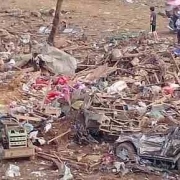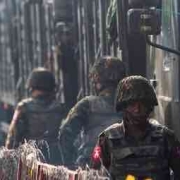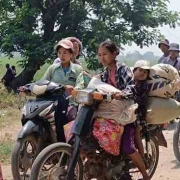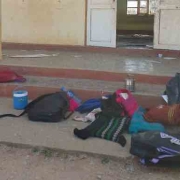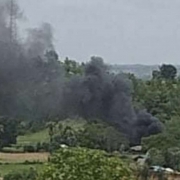Locals flee Laukkai as fighting between military, resistance nears
As some 2,000 people are believed to have left the Kokang town, the UN announces that recent displacement across northern Shan State totals 50,000
Thousands of people have reportedly fled the town of Laukkai (Laukkaing) in the Kokang Self-Administered Zone in northern Shan State, fearing that clashes between the military and the Brotherhood Alliance of ethnic armed organisations may be imminent.
The allied resistance forces, including the Ta’ang National Liberation Army, the Myanmar National Democratic Alliance Army (MNDAA), and the Arakan Army, have already seized control of the town of Chin Shwe Haw, 15 miles from Laukkai, as well as several other locations in the region, as part of Operation 1027, launched on October 27. To stop the arrival of junta reinforcements, they have also blocked roads, including the national highway connecting Mandalay with the northern Shan State administrative centre of Lashio, and the section which connects Lashio to Laukkai through Hsenwi Township.
Locals estimated that up to 2,000 people had left Laukkai recently, becoming stranded eight miles south of the town near the village of Par Hsin Kyaw, on the way to Chin Shwe Haw, due to road blocks. As of Tuesday evening, the MNDAA had reportedly allowed internally displaced persons from Laukkai some use of alternative routes while keeping main transportation veins blocked.
As of Thursday, the United Nations Office for the Coordination of Humanitarian Affairs said that some 50,000 people across northern Shan State had recently been displaced, in addition to 40,000 in Sagaing Region and Kachin State.
Laukkai was under the control of the Myanmar junta and its allied militias at the time of reporting. The chairperson of the military-appointed administration team for the Kokang area—Myint Swe—was believed to still be in the regime capital of Naypyitaw after attending an emergency meeting called by junta chief Min Aung Hlaing of the National Defence and Security Council on Wednesday. Several other key figures from the Kokang Region with close ties to the military had also reportedly left the town.
The junta-appointed council for the Kokang region issued a statement on October 28 claiming it was fully capable of “defending” Laukkai if attacked.
As of Wednesday, Myanmar army soldiers and their affiliates announced through megaphones that all shops in Laukkai were required to close, several locals said, adding that fully armed military vehicles were seen patrolling the town’s streets.
A 30-year-old man working in Laukkai told Myanmar Now that the junta had covered windows and doors with bricks on the top floors of hotels and high buildings.
“They’d already been stationed inside high buildings in Laukkai since November 1. At least seven junta soldiers were deployed in each building,” he explained, adding that soldiers had put barbed wire around the entrances and exits to the town.
Myanmar Now was unable to independently verify his claims.
Since Tuesday, residents reported hearing gunshots fired within the town, but noted that since Operation 1027 was launched, every day the military had fired missiles and heavy weapons in the direction they believed Brotherhood Alliance forces to be stationed outside of Laukkai.
The prices of basic commodities were also on the rise, and increasingly rare to locate, with a 50-kilogram sack of rice selling for 400,000 to 800,000 kyat (US$190-$380).
Even the price of instant noodles had doubled, a local man said.
“It’s not only that commodity prices are rising. It’s the fact that we can only buy dried commodities from China. The other basic commodities have gone out of stock.”



